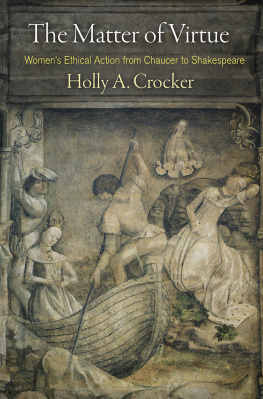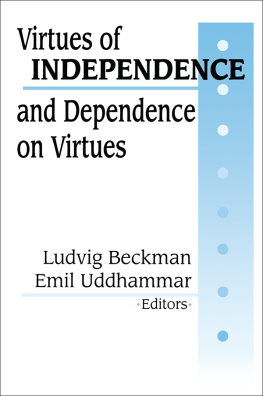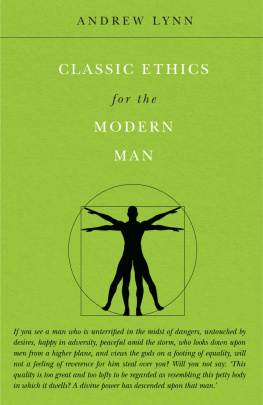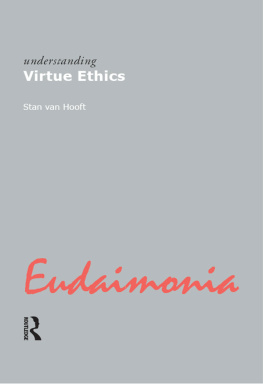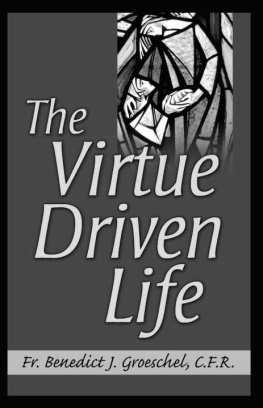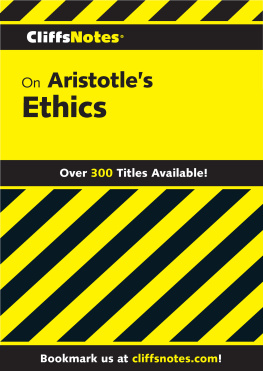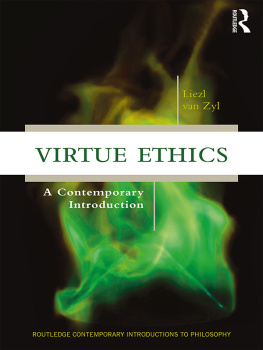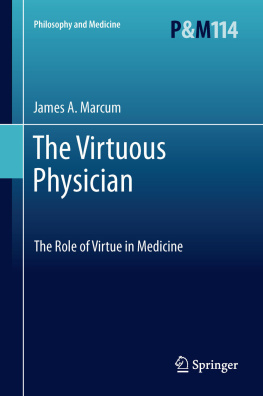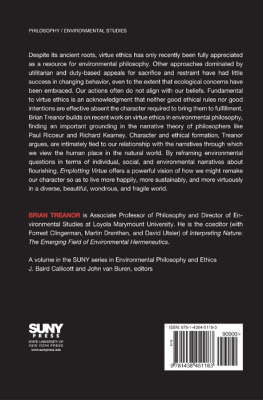This book is dedicated to Joe and Carolyn Brown, my parents. I have spent a lifetime watching them embody the very virtues this book aims to bring to light.
Acknowledgments
I would hesitate to claim a single thought in this book that was not implicitly or explicitly beholden to another source. A conversation. A book. A lecture. In that sense, it would be impossible to sufficiently acknowledge all of my debts.
Of course, some debts are more conspicuous than others. Specifically, I would like to thank my graduate school advisors, Dr. Eric Stoddart from St. Andrews University and Dr. Julie Clague and Gwilym Pryce from the University of Glasgow. If there is any rubbish in the book, I am most certainly to be creditedbut I would like to think that if there is anything good in the book, their thumbprint can be found. Yet another thumbprint comes from Hannah Brown at Hendrickson Publishers. Given her skills as an editor in addition to her expertise in classical virtue ethics, I could not have been blessed with a more fortunate arrangement.
I am so thankful for working at an institution that fosters ideas and their dissemination. I owe a great debt to our Asbury lunch meetings, coffee conversations, book studies, and student gatherings. I also want to thank the folks at Anderson Universitys Falls School of Business for their investment in me as a person and an academic.
I am wonderfully fortunate to have a spouse who is committed to thinking carefully about faithful living and virtue. My wife, Maria, has produced an array of thoughts whose depth, quality, and insight meet or exceed those to be found in some of my most cherished books. In addition to Maria, my children, Cambel, Ada, and Oliver, are a perpetual source of inspiration.
I want to thank Hubert, Nate, and Adriel for a (rather caffeinated!) meeting at Starbucks years back in which we discussed the popular Parable of the Sadhu case. This launched me into a deeper articulation of agent-based ethical inquiry.
I am also very thankful to Jason Mitchellpastor, author, but above all, friend. Jason has long been a source of insight, and he provided helpful direction in shaping some of the contours of this book and its arguments.
I am so grateful to Les Stobbe, my agent, for the effort and expertise he has provided on my behalf.
Finally, I want to thank my parents, Joe and Carolyn, and my sisters, Jenn and Laura. I can never know the full extent of the blessing they have been to me.
Introduction: What Is Virtue?
Whatever the cross and the gospel are about, it is not a slap on the hand for kids refusing to heed the rules of the cookie jar. It is not mere advice to get you to clean up your life and morals. It is not mere ideas to inform you about what it takes to be nice. It is restoration and re-creation, a physicians meditation; it is about human flourishing and discovering life.
Stuart McAllister
One of the most critical battles in human history took place over two thousand years ago. But you have probably never heard of it. By todays standards, it might seem rather tameor worse, boring.
Why?
Well, to begin, the battle was not physical (no spears, swords, gladiator fights, etc.); it was philosophical. Furthermore, the conflict was not historical; it was literary. The parties involved were not military representatives, and the dispute had little to do with state or culture. No kings were crowned, no enemies vanquished, no kin avenged, and no damsels saved. Because this skirmish is stripped of these seductive storytelling characteristics, we might be justified in neglecting the details.
But we would be making a mistake.
In fact, this clash of beliefs may be one of the most important confrontations ever recorded. It wasand isa battle over the nature of human purpose, significance, meaning, and fulfillment. It is about living wellwhat we tend to refer to as a good life. It speaks to flourishingbeing blessed or happy. Understood in these terms, everything is at stake, for everyone.
The confrontation is set in Platos most famous work, The Republic. The books main character is Socrates, who served as Platos teacher in real life. After initiating a discussion about the meaning of justice, Socrates is challenged by a Greek teacher named Thrasymachus, who famously describes justice as nothing other than the advantage of the stronger. According to him, being a good and decent person actually holds one back from having a better life. It is an impediment to real satisfaction and contentment. The virtue exhibited by the just, so goes the argument, is a barrier to climbing up the social ladder, accumulating wealth, and ultimately attaining happiness. To summarize, Thrasymachus believes that in order to live a happy life, assuming that happiness is attained through status or wealth, one is better off being unjust than just.
Thrasymachus is not alone. Chiming in on the argument is one of Socratess students, Glaucon. He affirms the belief that injustice is something of a necessary evil, for the life of the unjust man is, after all, far better than that of the just man, as they say. To prove it, Glaucon provides an argument in the form of a thought experiment, a familiar story called the Ring of Gyges.
Here is a modern-day version of the story. Imagine that while on a solitary hike in the woods, you stumble upon an alluring gold ring lying on the ground. As you will soon learn, this is no ordinary ring. When you turn the ring half a rotation on your finger, those around you speak and act as if you were not there. But when you turn the ring back to its normal position, they recognize your presence. To your amazement, you have stumbled upon a ring that can make you disappear and reappear at will.
What would it mean if such power were granted to you? It would mean that you could do whatever you wanted without the threat of judgment, consequence, or retaliation. You might be tempted to steal desirable goods, fulfill all manner of lusts, or perhaps enact cruel revenge against your enemies.


